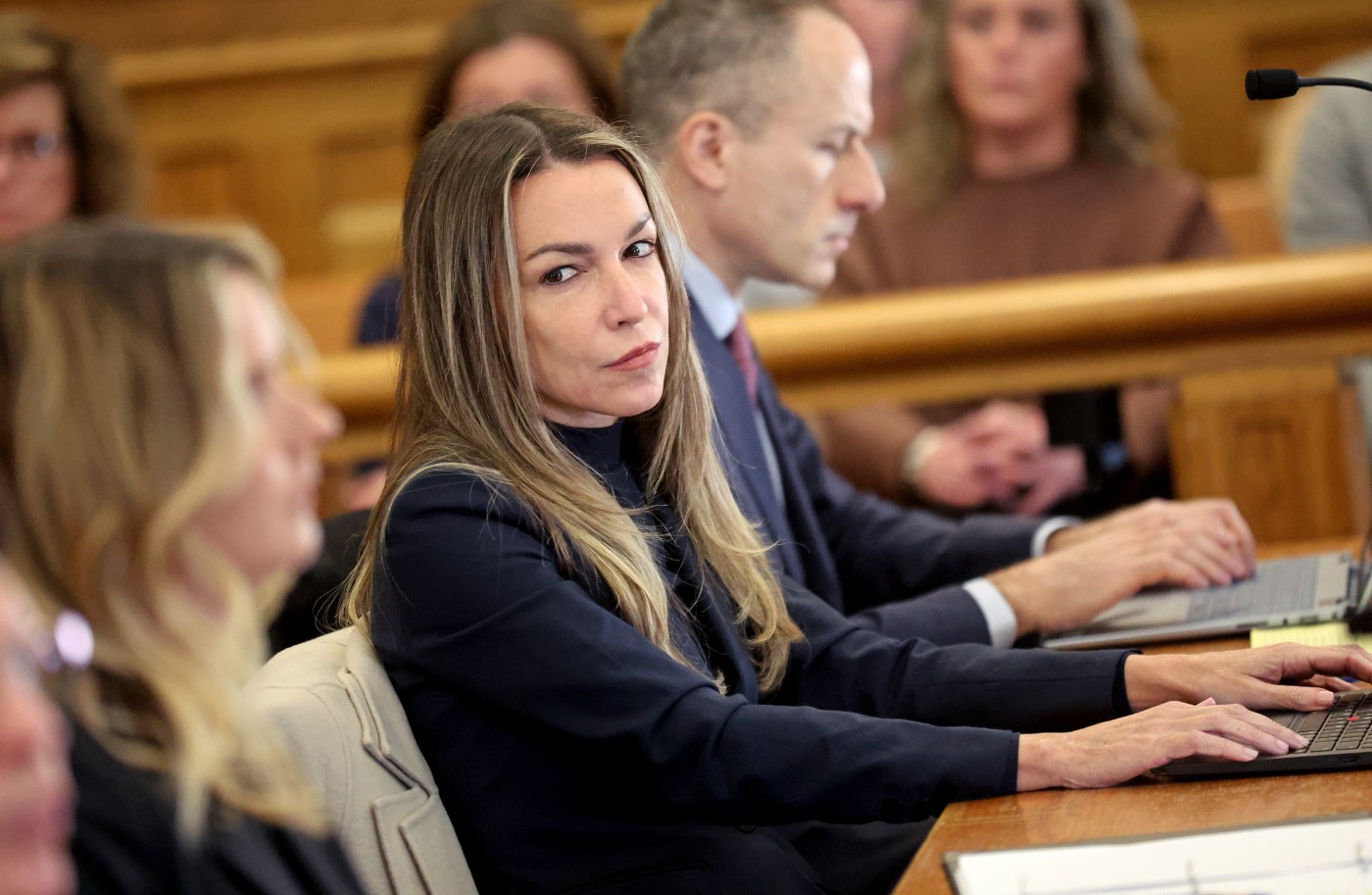
Karen Read murder case defense argues for dismissal at both federal and state courts
The Karen Read defense team mounted two efforts on Wednesday to have at least two charges — if not the whole case against her — tossed with less than one month to go before the Mansfield woman is scheduled to be retried for the murder of Boston cop John O’Keefe.
Read, 45, of Mansfield, is indicted on three charges: second-degree murder (Count 1), manslaughter while operating a motor vehicle under the influence (Count 2) and leaving the scene of an accident resulting in death (Count 3).
Prosecutors claim that Read slammed her Lexus SUV into O’Keefe, her boyfriend of about two years at the time, in the early morning of Jan. 29, 2022, after a night of heavy drinking and yet another fight in the troubled relationship and left him to freeze and die on a Canton front yard.
She was tried in Norfolk Superior Court in Dedham last year, but that ended in mistrial after the jury sent three notes stating they were at an impasse. She is scheduled to be retried on April 1, but the case has been anything but dormant in the interim.
Federal oversight
Wednesday began with the defense team’s try at the federal courthouse in Boston, where Read defense attorney Martin Weinberg argued that double jeopardy protections — that a defendant can’t be retried on charges she was already acquitted of — should be upheld at the federal level.
Weinberg had previously argued for dismissal before Judge Beverly J. Cannone, who presided over Read’s trial and is scheduled to preside over the next one. She denied his motions to dismiss.
Then came an appeal to the Supreme Judicial Court, Massachusetts’ highest court, which upheld Cannone’s ruling. Then, on Feb. 18, Weinberg filed a writ of habeas corpus to the federal court. In short, the appeal says that a federal judge should free Read from unlawful prosecution.
“The Petition relies upon post-trial statements of five jurors (four directly and one indirectly) that the jury in Ms. Read’s first trial reached a final, unanimous decision to acquit her of second-degree murder,” Weinberg wrote in the memorandum supporting the writ.
Weinberg argued Wednesday that U.S. District Court Chief Judge F. Dennis Saylor IV should order a post-trial voir dire, or formal questioning, of the Read jurors, arguing that the judge had the authority to do so.
“Let me stop you there,” Saylor said. “Is that true?”
Weinberg admitted that he knew of no such direct precedent for what he was asking, but cited similar state cases involving biased juries, which falls under Sixth Amendment protections, and that the Fifth Amendment protection from double jeopardy “are as valuable.” He also brought up a jury bias probe in the case of Boston Marathon bomber Dzhokhar Tsarnaev’s 2015 trial.
Saylor didn’t appear convinced: “But in Tsarnaev, that’s the federal court examining its own case … In this case, that would be the federal court examining a state case.”
Weinberg also argued that Cannone declared a mistrial without consulting with defense counsel as she was required to do. He said that she had “three or four alternatives” to declaring a mistrial upon the third note, including asking the jurors if the impasse was to all charges or only certain charges.
Norfolk Assistant District Attorney Caleb Schillinger said Cannone “didn’t rush to a mistrial” but instead followed Massachusetts’ law standards. Upon the first impasse note, he said, she ordered the jury back to deliberations. Then she gave a “Tuohy-Rodriguez” warning, which is a specific set of instructions to urge deliberations. Finally, she declared a mistrial. He said she handled it well and that to go further could have opened her up to allegations of coercion of the jury.
“The jury had made it clear, and the judge found it clear, that they wouldn’t consent to continue deliberating,” Schillinger said.
Saylor said that if he had “a year to write this opinion I would be more scholarly,” but that he was going to come to an opinion as soon as possible so the sides could appeal if needed before Read’s next trial date.
Back to Dedham
The second in the dual-pronged efforts of the day was back in Norfolk Superior Court before Judge Cannone where defense attorney Alan Jackson argued his motion to dismiss the case “on the basis of extraordinary governmental misconduct.”
“The cumulative discovery misconduct by the Commonwealth … through their agents, has been both egregious and pervasive,” Jackson began his argument.
He said while he has many claims of this, “in the interest of time and focus” he wanted to hone in on the state not handing over videos from the Canton Police Department sallyport garage where Read’s Lexus LX570 SUV, the alleged murder weapon, was taken upon her arrest.
Jackson argued that prosecutors and the police did not turn over those videos despite being required to do so and that the defense got only “dribs and drabs” of video both during trial and then well after — robbing Read of her right to a fair trial and committing “literally a fraud on the jury.”
The videos are critical, he said, because they would reveal the condition of the right taillight that the prosecution says was shattered when Read slammed into O’Keefe. He said that pieces of the taillight housing were only found on the lawn days after O’Keefe died, meaning only after authorities had custody of Read’s SUV, meaning they could have broken it themselves and planted it. He also claimed that the videos that were released were altered, like the one video shown at trial that was reversed.
“The Commonwealth cannot deny the untimely disclosure of critical exculpatory evidence,” Jackson said. “… And they also cannot deny that critical evidence was intentionally, not by some sort of mishap, but intentionally withheld from us.”
Jackson said that they did so to try to secure “a conviction at all costs” and that “the only remedy is dismissal.”
Special prosecutor Hank Brennan said that it’s a “baseless claim” that any video was altered and that the defense has “produced absolutely no evidence” that it was.
As for the sallyport videos, Brennan admitted that the videos should have been released sooner and the whole production should have been more organized. But, he said, the mistake was “inadvertent” and the lack of video was “inconsequential” to the defense’s case because “that light was missing before it made it to the sallyport.”
He played video in the court of two instances where the vehicle can be seen before it was in the police garage. In both, he said, the taillight was already missing and the white light below exposed.
The parties have a deadline of Monday for final motions, with responses due the following Friday. They will next meet in state court on March 18.


